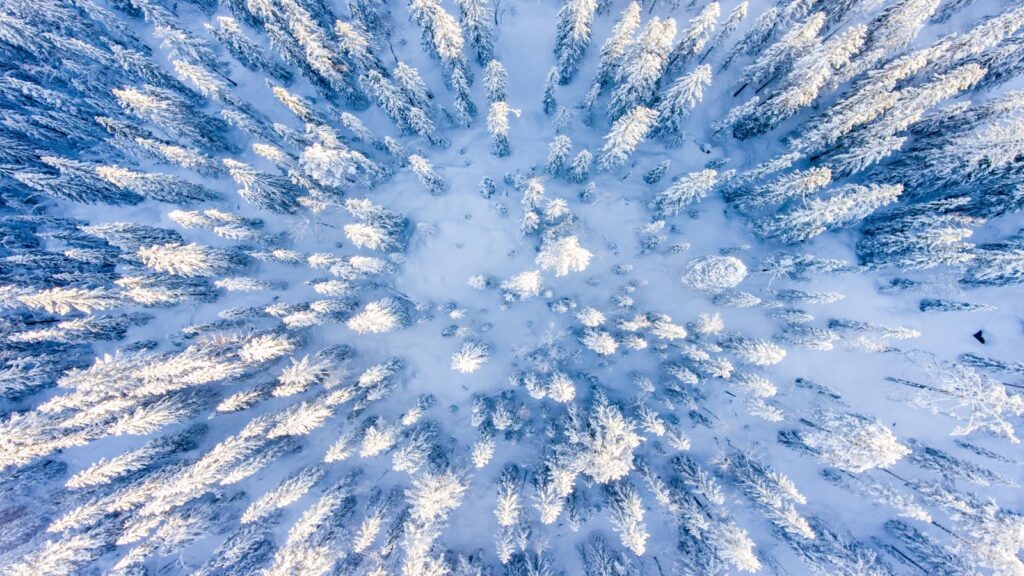
The key factor in staying safe when going out into the backcountry in winter is understanding what is going on with the snow. And what is going on with the snow, you might be asking? Well, as I learned in a recent avalanche course, a whole lot.
We tend to think of snow as this light, fluffy stuff that falls from the sky and makes everything all pretty and white. And while that much is true, when it piles up six feet deep and freezes solid, snow can feel more like concrete. As winter progresses in the mountains, layer upon layer of heavy, dense snowpack accumulates from the season’s storms. And when that slab is sitting on a steep enough slope it can slide, taking out trees, houses and anyone dumb enough to be skiing over it.
Ski resorts manage this risk within their boundaries by using snow cats to pack and shape the snow. No, not this.
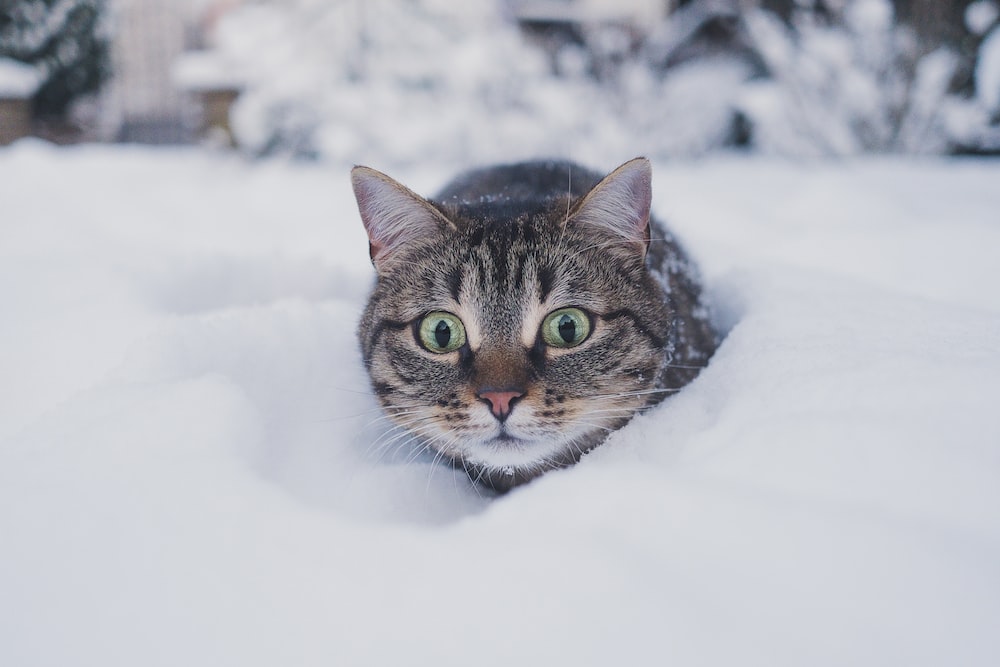
This.
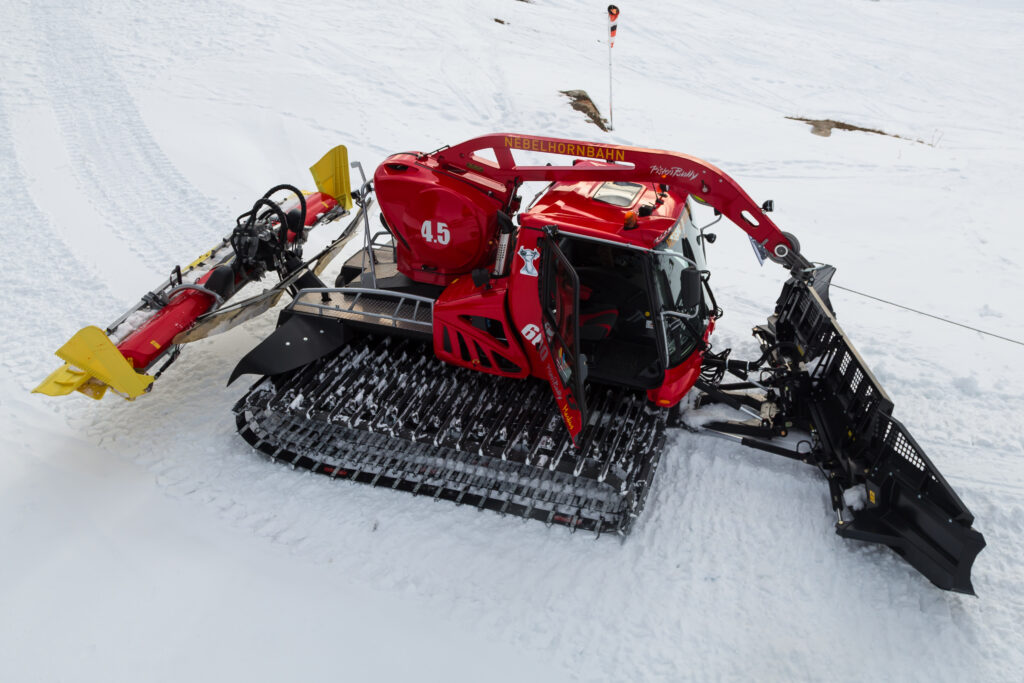
The average ski tourist never has to worry about whether or not a slope is going to slide. It’s bad public relations if Brad and Becky from Toledo get killed while on vacation.
But in the backcountry, you’re on your own. There’s no one grooming trails. You take the snow as mother nature deposits it, sometimes light and fluffy, sometimes hard and windswept. Seldom completely predictable. You’re responsible for your safety and if you don’t know what you’re doing there’s a statistically good chance you’ll end up on the wrong side of the chalk outline.
To improve my knowing what I’m doing, this week I finished my AIARE 1 avalanche training course. It was sponsored by the city of Salida and put on by the knowledgeable folks at Buena Vista Mountain Adventures. The purpose of the course is to teach students about the risks involved in the backcountry and to give them the basic knowledge and tools to manage those risks. A good portion of that knowledge is an understanding of the dynamics of the snowpack under your feet.
The course was three days long and it involved both classroom and field work. We practiced using our avalanche transceiver, shovel and probe to rescue someone trapped in an avalanche. Fortunately, no one had to volunteer to be buried in the snow. Our “victim” was a transceiver in a backpack.
We dug pits to analyze the layers of snow and determine the likelihood of an avalanche. In fact, most of the first two days of the class was spent digging in the snow. Nothing like physical labor to help you retain a concept.
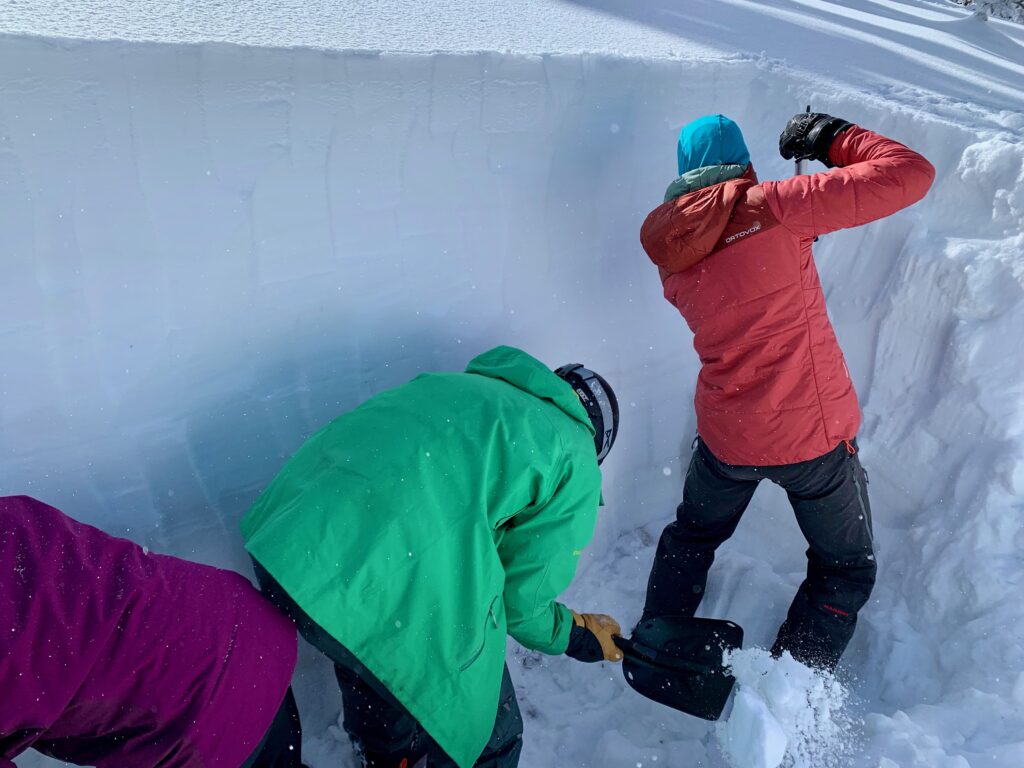
Now that is one fine quality pit.
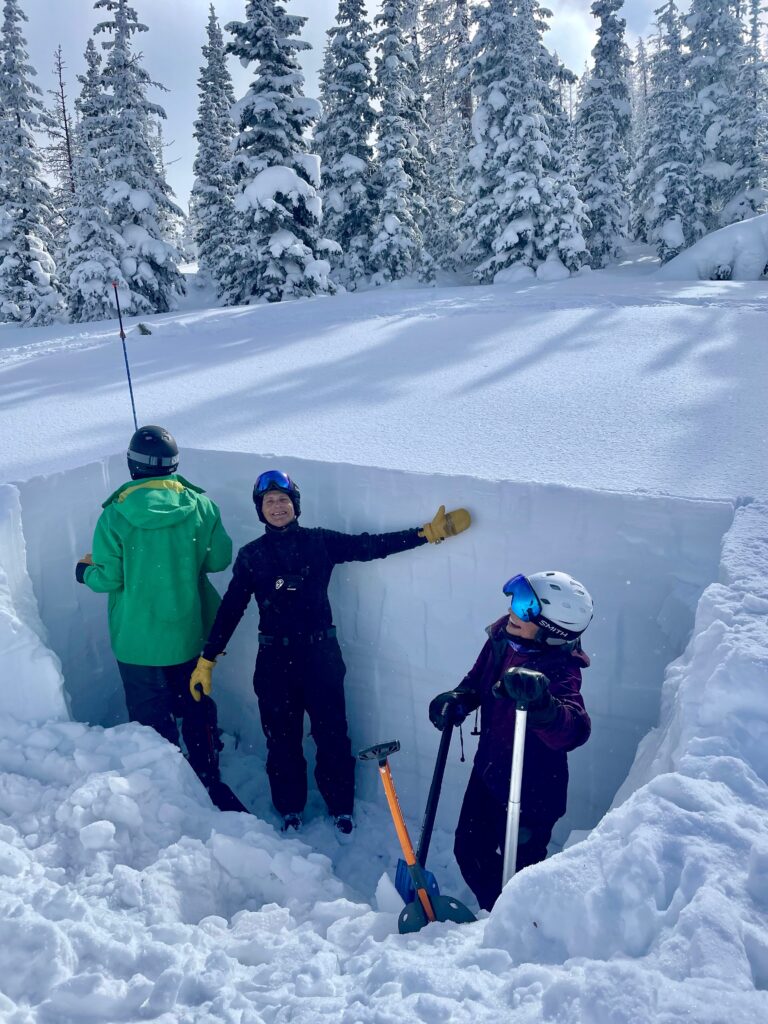
Our instructor, Katie, identifying the layers in the snow.
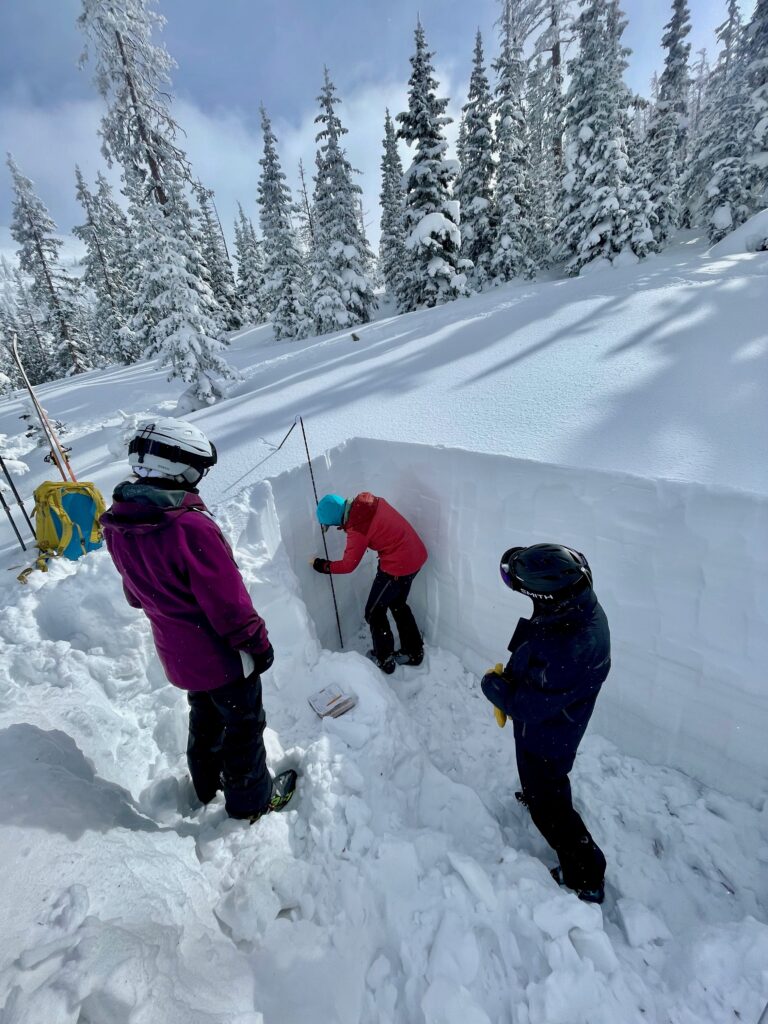
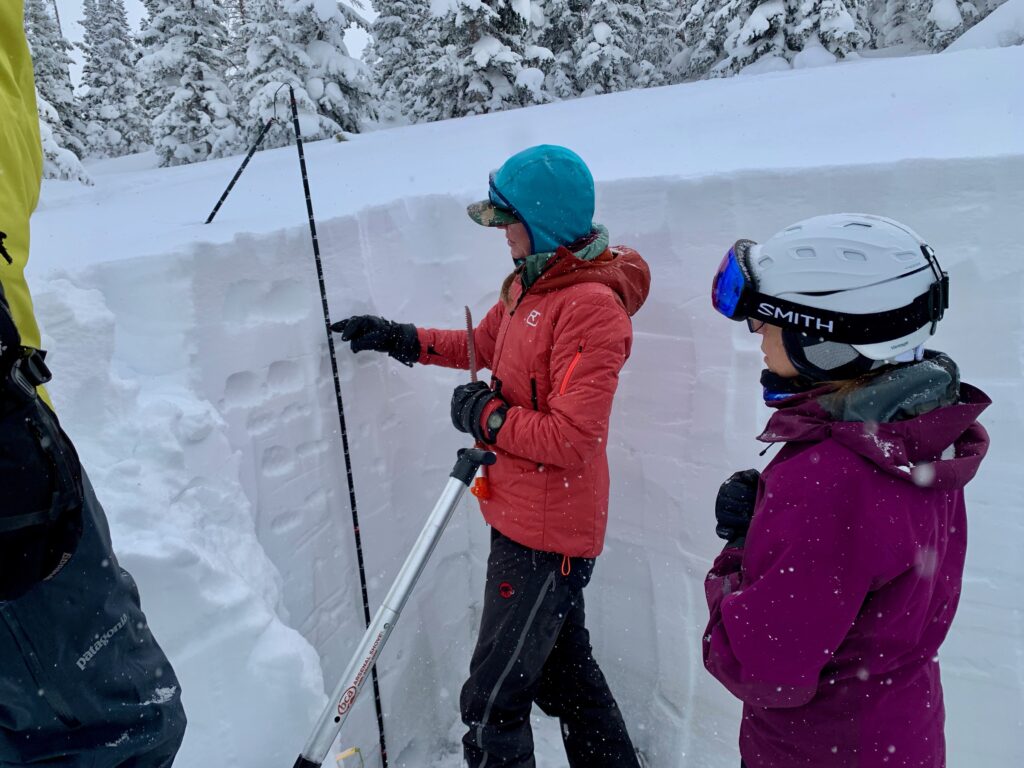
Our analysis of the layers. The problem, you see, is that 170 cm of hard snow (5 foot 7 inches in freedom units) sitting on top of 35 cm (14 inches) of soft snow. A classic persistent slab.
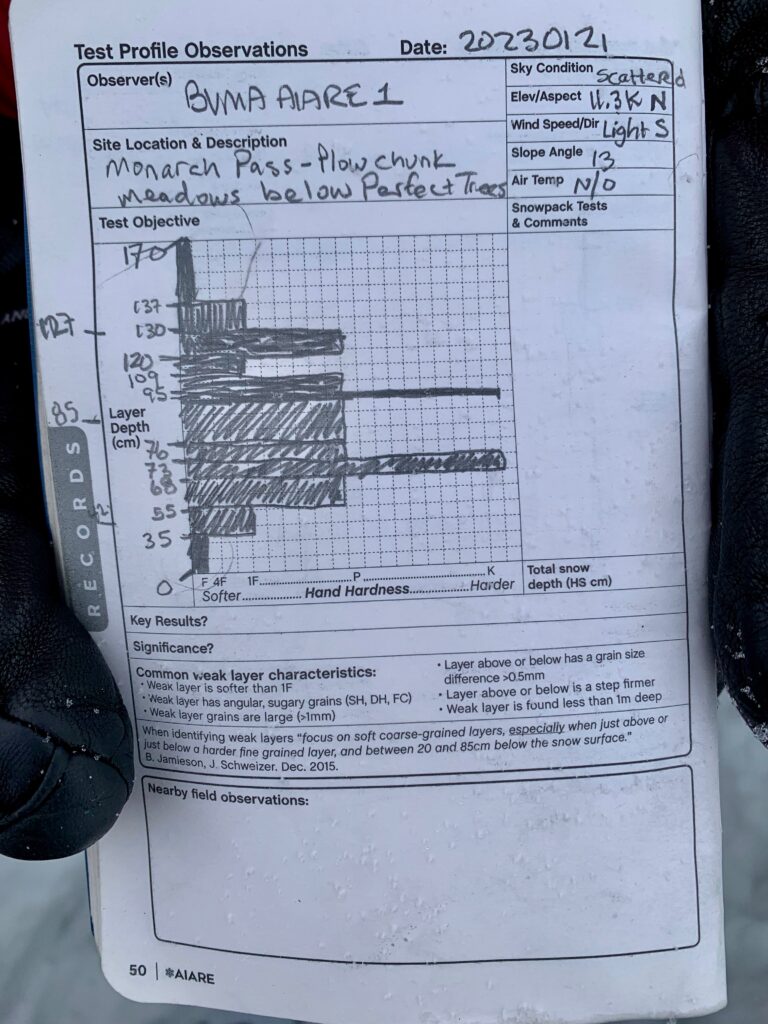
Katie, demonstrating how to do a column test.
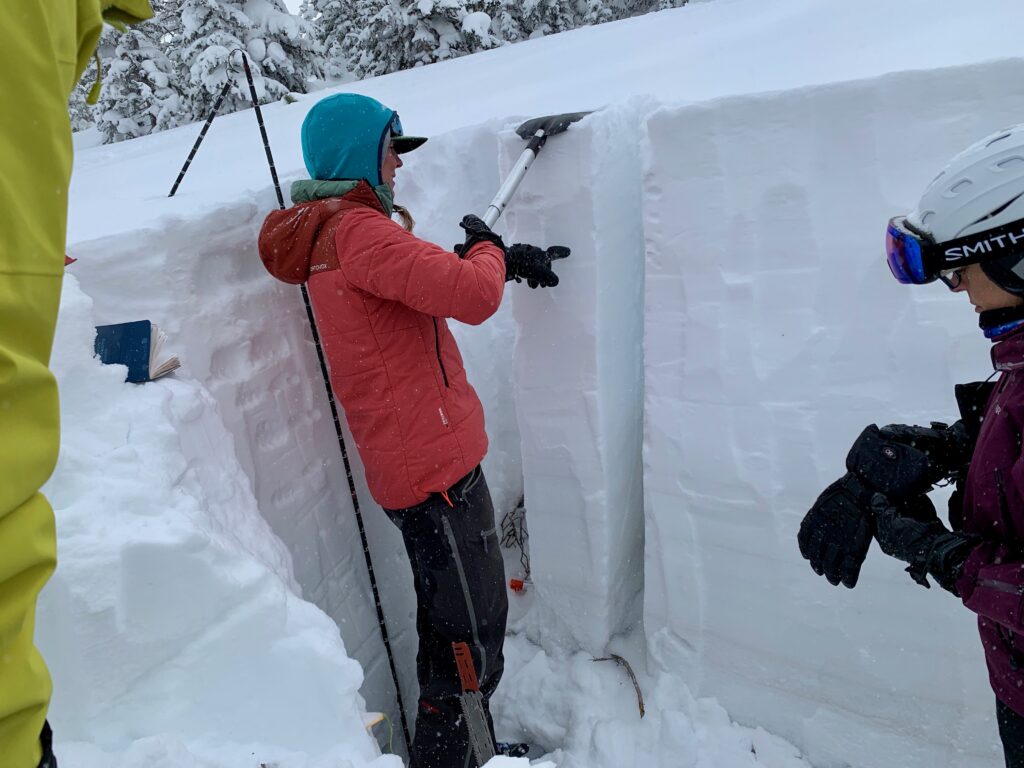
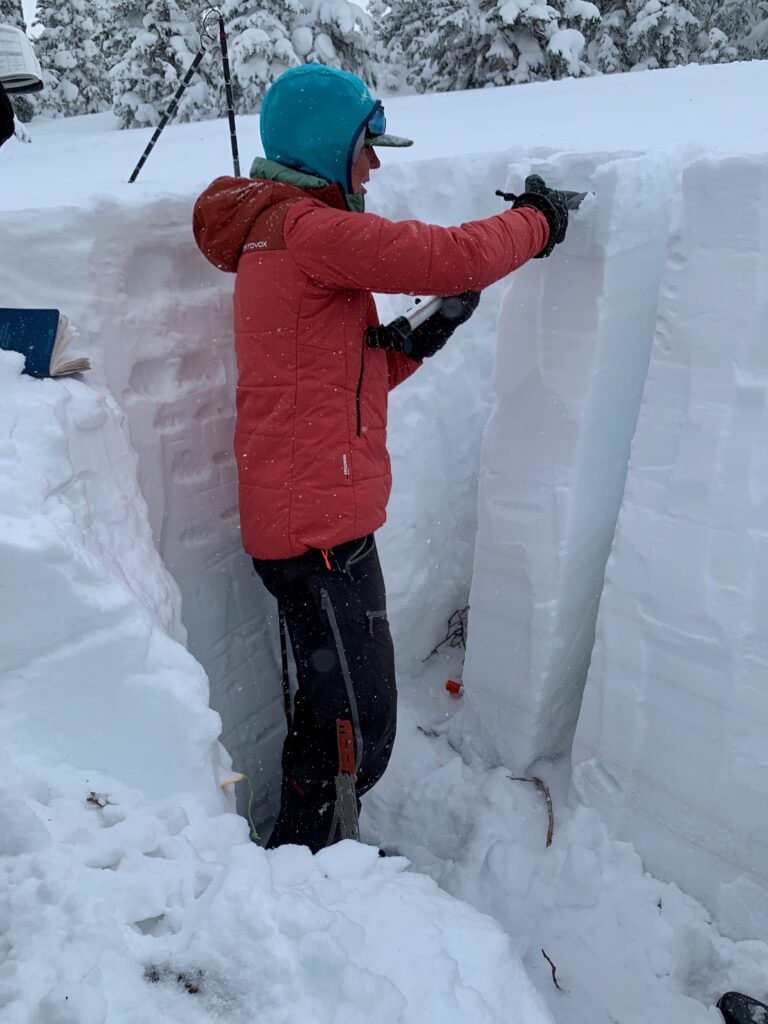
After two days of nearly non-stop digging, we got to get out and do what we like to do in the backcountry, the whole reason for taking the class, ski!
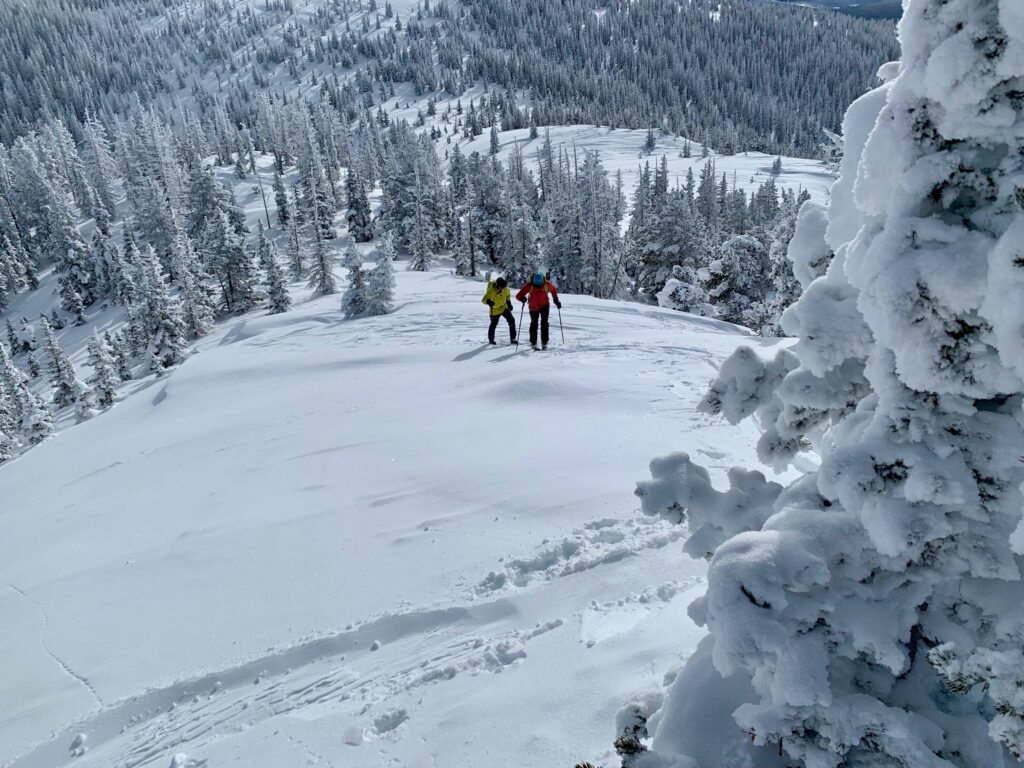
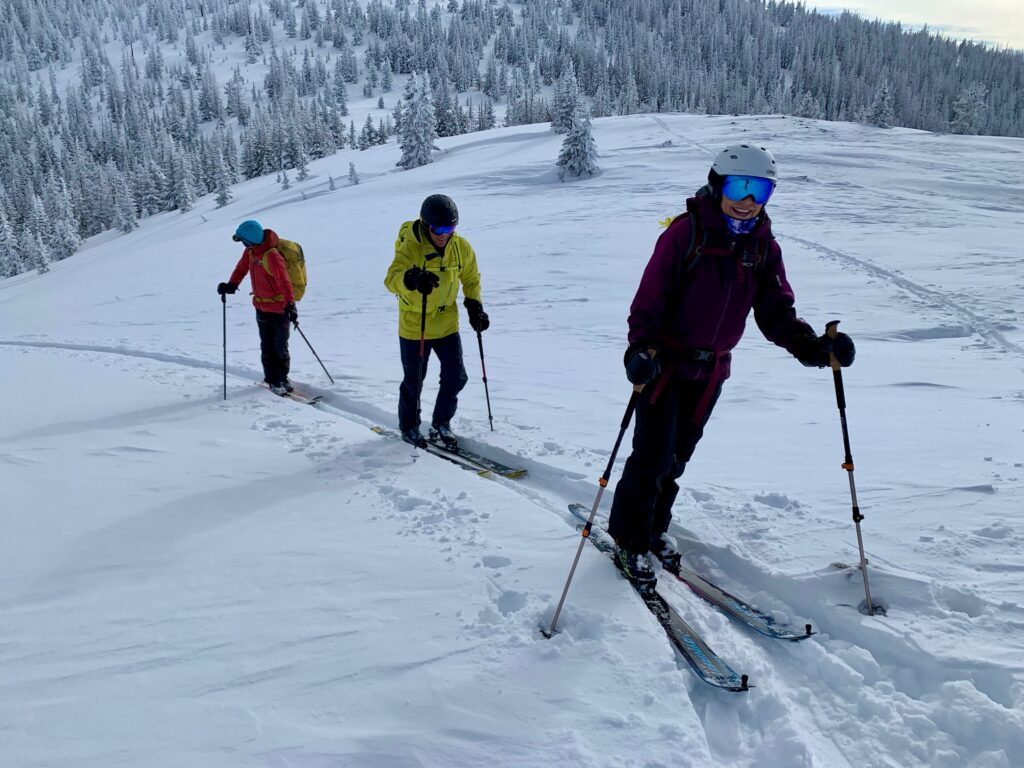
On top of peak 11,560 looking down at our first run of the day. It was glorious. The sense of freedom skiing a backcountry slope, picking my own line through the trees, even on a slope as mellow as this, was way beyond anything I’ve experienced resort skiing.
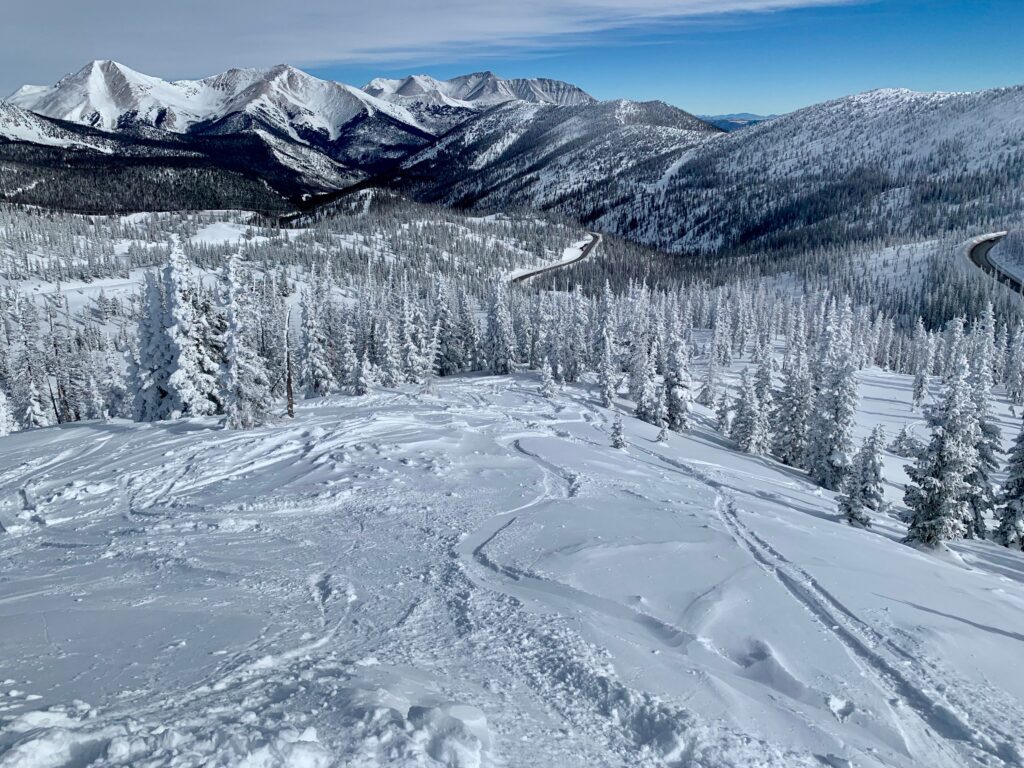
Heading back up for lap number two.
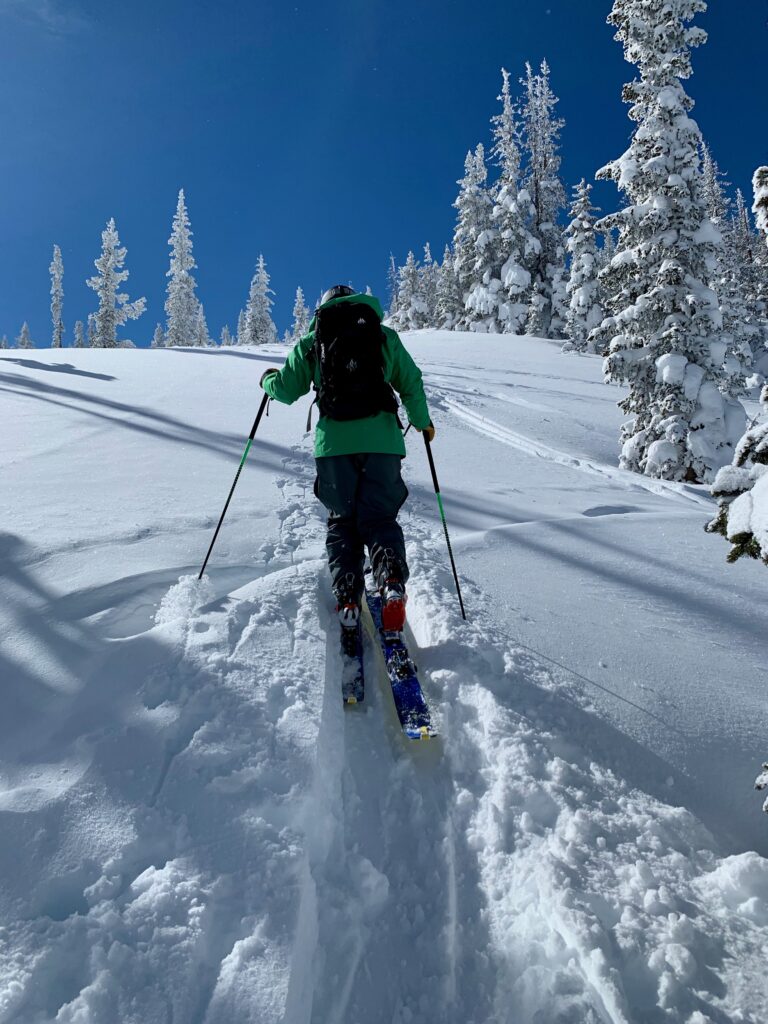
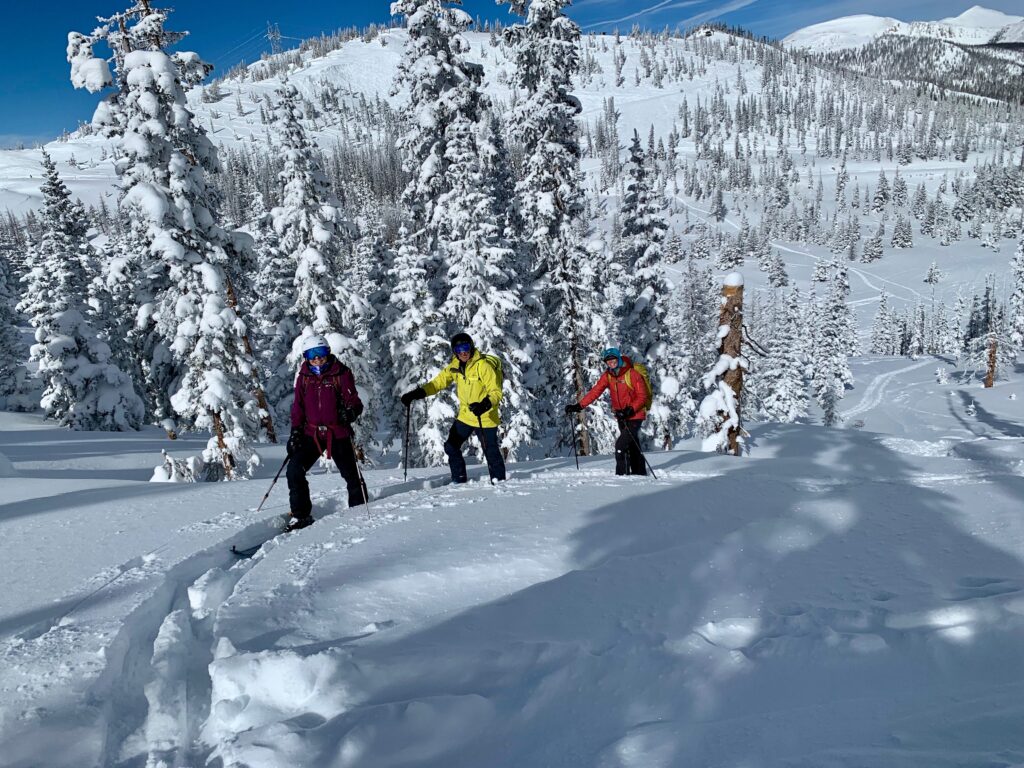
Stopping for a chat and a closer look at the snow.
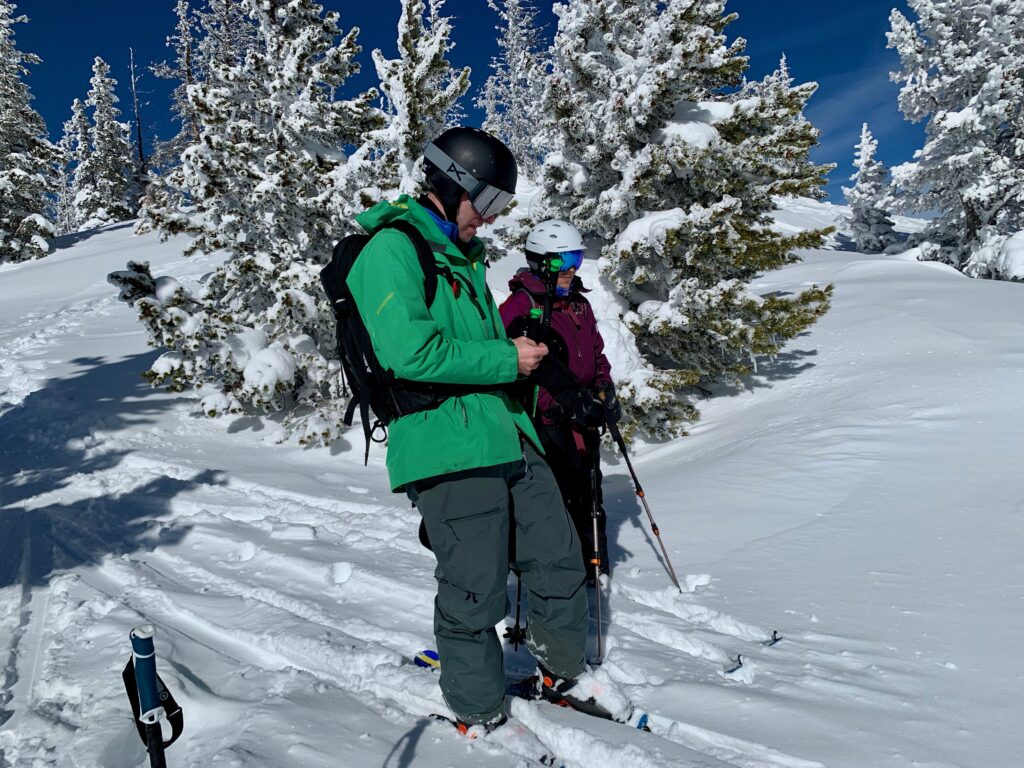
Looking across the saddle to our next objective for the day, Peak 11,692.
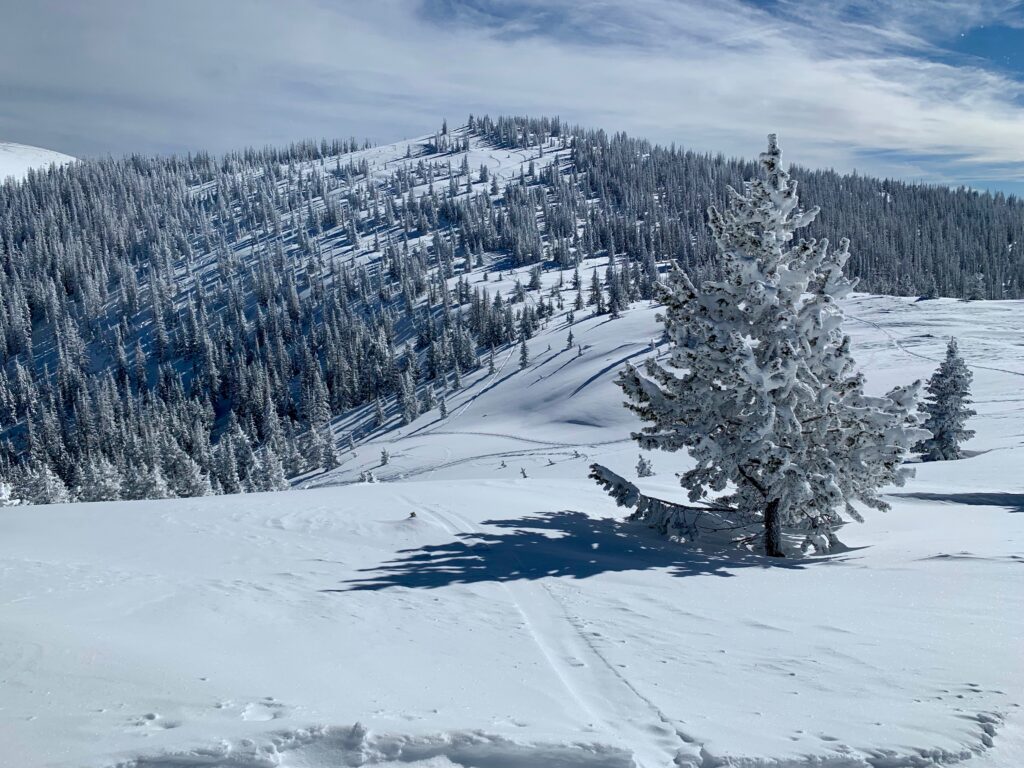
Digging a small pit to perform another snow check on a different slope aspect.
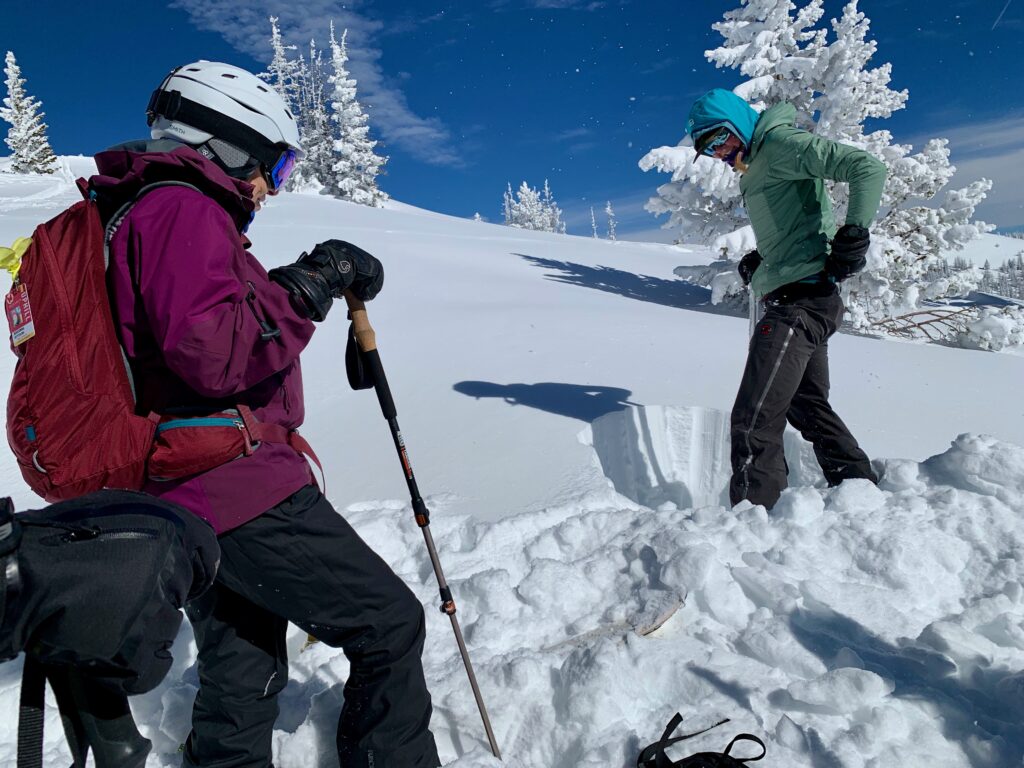
Summit of Peak 11,692.
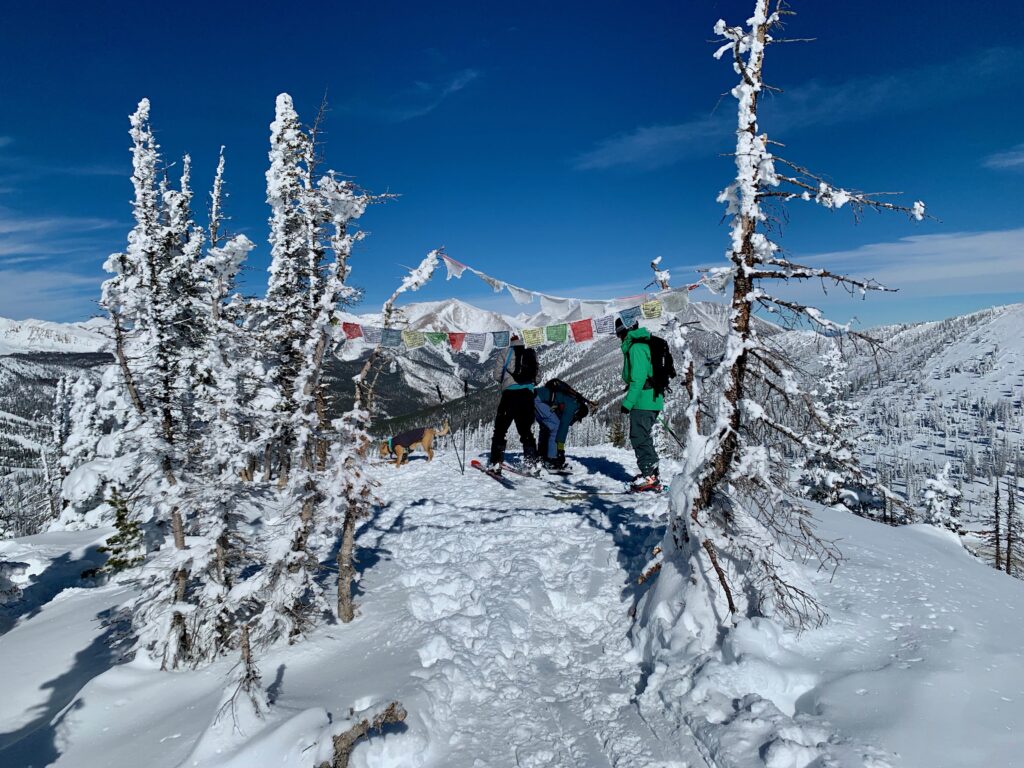
Our group summiting.
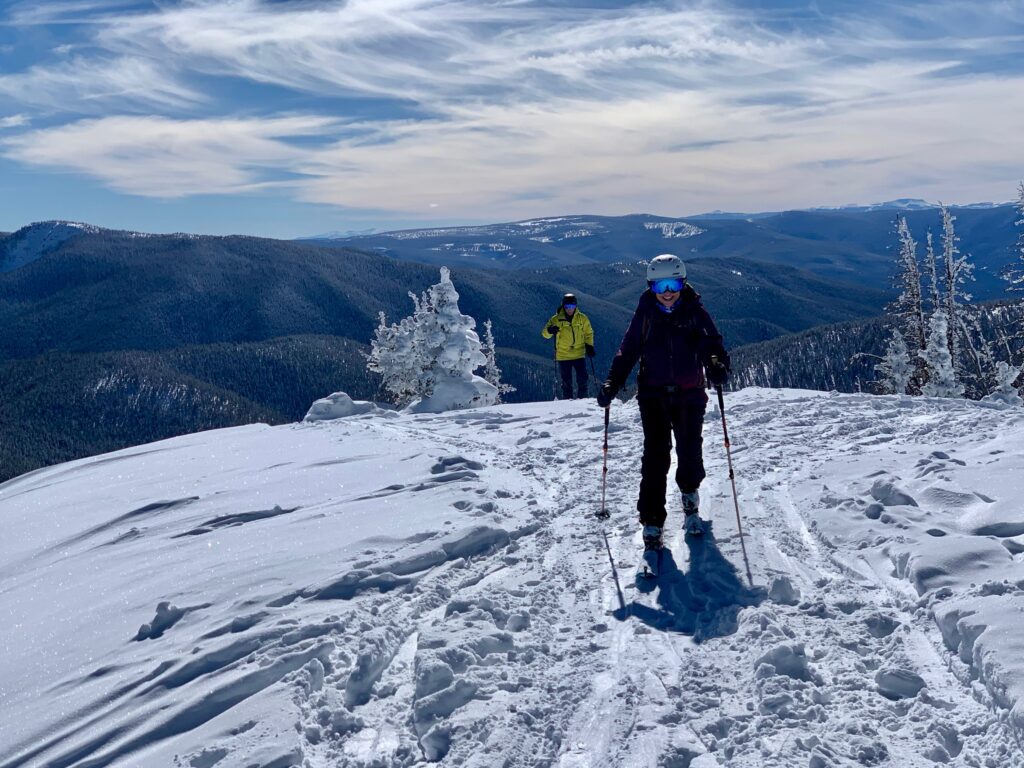
Our second and third runs of the day. This one was so good once wasn’t enough. After our first descent, several of us climbed back up to do it a second time.
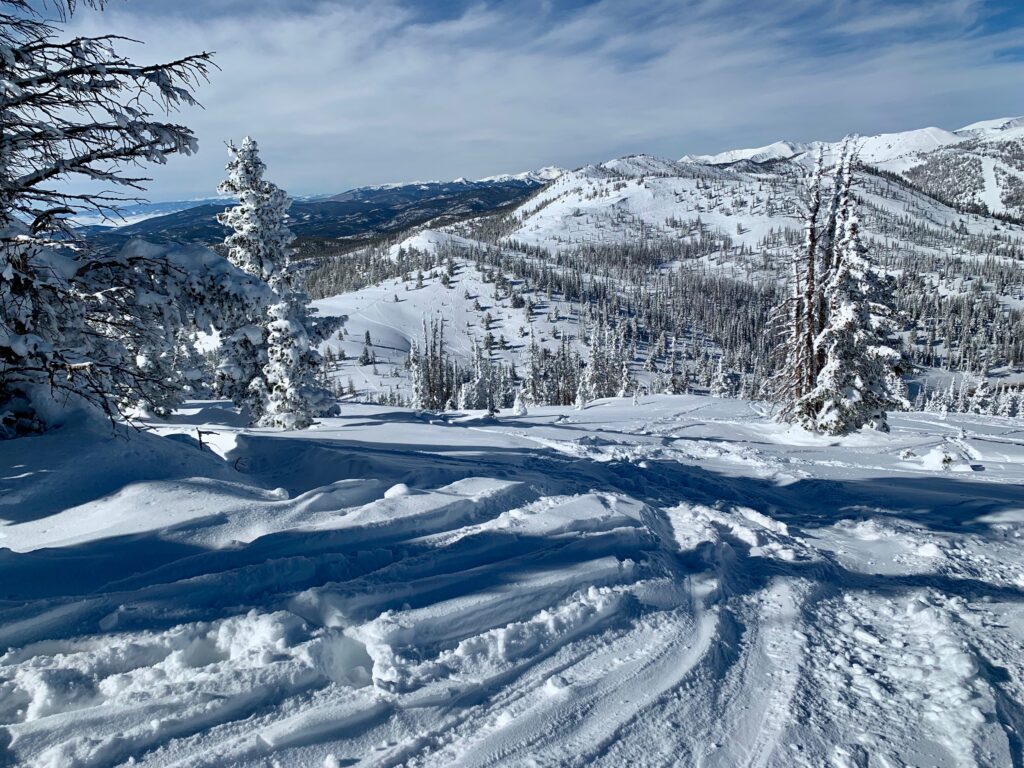
All in all, it was a great course. It’s nice to get some practical knowledge on a subject in which I’m deeply interested, especially when that knowledge opens the door to such an incredibly fun activity. The AIARE 1 course is just the first step. We’re looking forward to expanding our skills and knowledge as we gain more experience skiing the backcountry.
WOW. That looks like a field of study you could spend a lifetime on. Are you planning on becoming active in the ski rescue biz again?
It’s incredibly interesting, for sure. For me it’s all about learning to recognize safe versus dangerous conditions in the backcountry, when/where you can safely ski, and what to do if things go sideways.